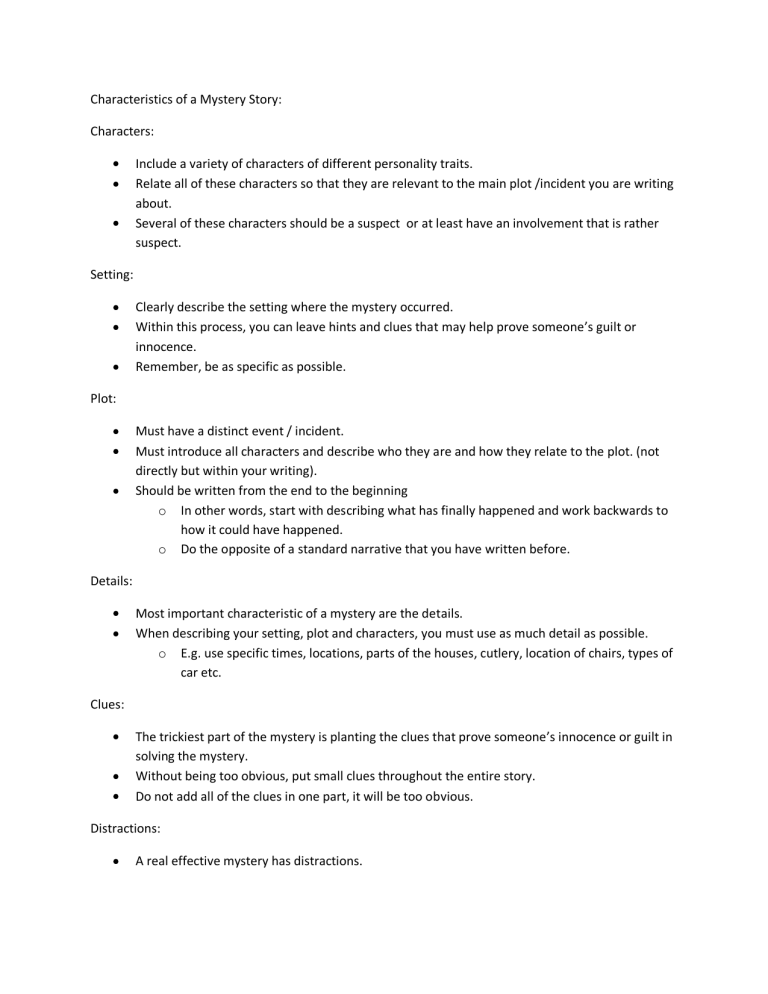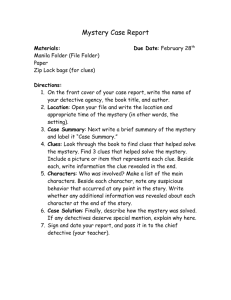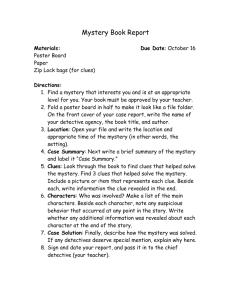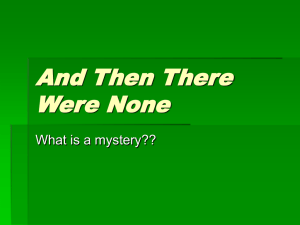
Characteristics of a Mystery Story: Characters: Include a variety of characters of different personality traits. Relate all of these characters so that they are relevant to the main plot /incident you are writing about. Several of these characters should be a suspect or at least have an involvement that is rather suspect. Setting: Clearly describe the setting where the mystery occurred. Within this process, you can leave hints and clues that may help prove someone’s guilt or innocence. Remember, be as specific as possible. Plot: Must have a distinct event / incident. Must introduce all characters and describe who they are and how they relate to the plot. (not directly but within your writing). Should be written from the end to the beginning o In other words, start with describing what has finally happened and work backwards to how it could have happened. o Do the opposite of a standard narrative that you have written before. Details: Most important characteristic of a mystery are the details. When describing your setting, plot and characters, you must use as much detail as possible. o E.g. use specific times, locations, parts of the houses, cutlery, location of chairs, types of car etc. Clues: The trickiest part of the mystery is planting the clues that prove someone’s innocence or guilt in solving the mystery. Without being too obvious, put small clues throughout the entire story. Do not add all of the clues in one part, it will be too obvious. Distractions: A real effective mystery has distractions. These are events, people and details that make the reader second guess their opinions or have trouble distinquishing between who may be responsible for the mystery. These distractions can be written in your details. o E.g. Use time as a distraction. If the mystery occurred at 1:00 pm but a suspect claims they were somewhere else at that time … this is a distraction! Solution: In the end, someone / something must have enough evidence or enough clues to support their guilt or innocence in the story. An effective solution leaves that person as the most obvious choice. o An ineffective solution would leave the reader still thinking that several people could be the culprit. Having said that, many mysteries that become trilogies or have sequels use this strategy to keep the reader/audience wanting to view the next story. In this case, try to end your mystery with a clear and decisive conclusion.



